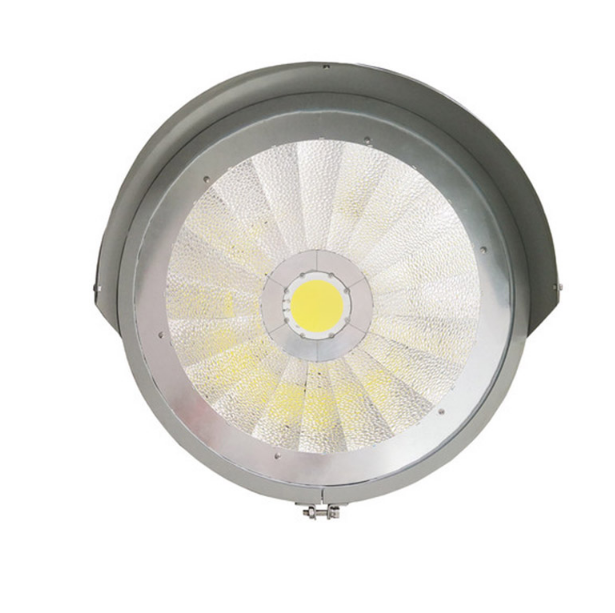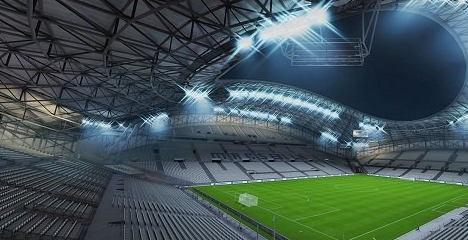When was the last instance that the lighting quality on a sports field caught your attention? Although most individuals seldom notice the significance of field lighting, seasoned athletes, professional coaches, and stadium managers are acutely aware of the indispensable role that effective illumination plays in enhancing both athletic performance and safety standards. Whether it’s an intense, high-stakes football match conducted under the brilliance of Sport Field Lights or a leisurely baseball game played at the local park, the caliber of lighting can either elevate the event or cause it to fall short of expectations.
By ensuring that players have optimal visibility, spectators can fully appreciate the on-field action, and the entire playing surface is uniformly brightened, quality lighting becomes a pivotal factor in determining the success of a sporting event. More critically, appropriate illumination serves to reduce the incidence of accidents, elevates the overall quality of play, and fosters a significantly safer environment for all involved. With the advent of cutting-edge LED technology, it has now become feasible to achieve highly efficient and precisely targeted lighting solutions that satisfy the rigorous requirements of contemporary sports arenas. This discussion aims to explore how state-of-the-art lighting systems contribute to improved safety, the impact of modern LED solutions, and the anticipated advancements in the realm of sports field lighting.
Crafting an Optimal Sports Field Lighting System
Strategic Planning for a Superior Lighting Solution
The conceptualization and implementation of a lighting system tailored for sports fields involve a sophisticated process that demands careful consideration of multiple factors. These encompass not only the fundamental aspects of brightness, coverage, and energy efficiency but also necessitate meticulous efforts to minimize glare and optimize visibility for both participants and viewers. A well-constructed lighting configuration must address the unique requirements associated with different sports, field dimensions, and seating arrangements for spectators. For instance, the illumination needs of a baseball field are markedly distinct from those of a soccer pitch or tennis court, requiring sport-specific solutions.
Achieving Ideal Visibility and Safety:
Ensuring comprehensive coverage across the entire field is paramount to reducing shadowing effects, thus minimizing the potential for players to trip or fail to track the ball during critical moments. An adequately illuminated field not only bolsters athlete performance but also enables referees to make accurate calls while providing spectators with an unobstructed view of the game, thereby enhancing their overall engagement and enjoyment.
Mitigating Glare and Flicker Effects:
Excessive glare and flickering can detract from player concentration, subsequently leading to suboptimal performance or even contributing to accidents. Innovative LED systems like those produced by Fujian CAS-Ceramic Optoelectronics Technology Co., Ltd. incorporate advanced optics and asymmetrical designs that effectively mitigate these challenges, delivering steady and uniform illumination across the field. Their SPLC series, for instance, features a genuine single optical system that focuses light output in the designated area, thereby curtailing unnecessary light spill.
Balancing Expenditures and Efficiency:
While the financial aspect is invariably a consideration in designing any lighting system, it is critical to evaluate both the initial investment and long-term operational costs. Premium LED systems, despite their relatively higher upfront cost, provide significant savings over time due to reduced energy usage and lower maintenance needs. This is particularly relevant for venues that require high-power solutions like the 1200W LED Sport Field Lights, which can deliver an impressive luminous efficacy of up to 130 lumens per watt, optimizing both performance and efficiency.
Maximizing Energy Efficiency in Sports Field Lighting: Essential Insights
Revolutionizing Sports Field Illumination with LED Technology
Historically, metal halide lamps were the prevalent choice for sports field lighting. However, these lamps are accompanied by several disadvantages, such as high energy consumption, shorter lifespan, and considerable heat generation. In contrast, LED lighting systems have emerged as the superior option, offering enhanced efficiency, improved light quality, and significantly lower long-term expenses.
Higher Luminous Efficacy and Advanced Heat Management:
Contemporary LED fixtures, like those developed by Fujian CAS-Ceramic Optoelectronics Technology Co., Ltd., leverage high-power ceramic chip-on-board (COB) LEDs paired with cutting-edge heat dissipation technology. This configuration not only achieves a high luminous efficacy of up to 130 lm/W but also incorporates patented dual heat pipe heatsinks, which effectively manage thermal performance, thereby extending the lifespan of the fixtures and maintaining optimal operational efficiency.
Minimizing Light Pollution and Environmental Impact:
Traditional sports field lighting often leads to excessive light spill beyond the designated playing area, resulting in light pollution that affects nearby residential or commercial zones. The SPLC series Sport Field Lights address this issue by utilizing a single 1600W phosphor ceramic COB light source in conjunction with various visor options, ensuring that light is focused precisely where it is needed without illuminating unintended areas.
Reduced Maintenance and Operational Costs:
Compared to conventional metal halide lamps, LED Sport Field Lights have a significantly longer operational life, reducing the frequency and cost associated with replacements. This benefit is particularly advantageous for large-scale stadiums and arenas, where replacing fixtures can be both logistically challenging and expensive. Over time, the cumulative energy savings and diminished maintenance demands make LED systems a cost-effective solution.
The Evolution of Sports Field Lighting: Innovations on the Horizon
Anticipated Technological Advancements and Emerging Trends
The landscape of sports field lighting is undergoing rapid transformation, fueled by continuous technological innovations and novel design concepts that are set to redefine the standards of lighting quality, efficiency, and versatility. As an increasing number of sports venues transition to LED solutions, industry leaders are striving to push the boundaries of what is achievable.
Adoption of Smart Lighting Systems:
The integration of smart lighting technology is poised to be a defining trend in the industry. Such systems enable remote control of various lighting parameters, allowing for fine-tuned adjustments to brightness, color temperature, and light directionality. This capability is particularly advantageous for multi-purpose venues that host a diverse range of events, each with unique lighting requirements.
Enhanced Visual Experience with HDTV-Ready Lighting Solutions:
With the proliferation of high-definition broadcasting for sports events, ensuring that stadium lighting is compatible with HDTV standards has become imperative. The SPLC series by Fujian CAS-Ceramic Optoelectronics Technology Co., Ltd. delivers ultra-low glare levels and exceptional uniformity, making it ideal for televised events. This helps in minimizing shadows and enhancing broadcast quality, offering viewers a more immersive experience.
Tailored Lighting Designs for Athletes and Spectators Alike:
Contemporary lighting solutions are being customized to cater not only to the needs of athletes but also to the comfort and viewing experience of spectators. This includes mitigating glare, optimizing color temperatures to reduce eye fatigue, and ensuring consistent light levels throughout the event. The ability to adapt lighting setups to suit different sports further amplifies the spectator experience, making them feel more connected to the on-field action.
Selecting the Right Sports Field Lighting: A Detailed Overview
Key Factors to Consider for Optimal Lighting Solutions
Choosing the appropriate lighting for a sports field entails careful deliberation of several critical factors to ensure the ideal solution is selected. Below is a comprehensive guide to what must be taken into account:
Specific Sport Requirements and Purposes:
The lighting needs of each sport vary considerably. For instance, baseball fields demand focused illumination on the pitcher’s mound and batter’s box, while soccer fields require evenly distributed lighting over a larger area. Recognizing these distinct requirements is essential in selecting the correct fixtures.
Field Dimensions and Structural Layout:
The overall size and layout of the field determine both the number and positioning of Sport Field Lights. Large stadiums typically utilize four high towers to minimize glare, whereas smaller fields may employ sidelights with poles of varying heights between 12 to 20 meters.
Budget Constraints and Energy Efficiency Objectives:
It is essential to assess your budget and define energy efficiency targets. Although high-quality LED systems may involve a greater initial expenditure, they result in reduced energy bills and maintenance expenses over time.
Conclusion: Illuminating Safety and Performance for a Superior Sporting Experience
Sport Field Lights transcends merely brightening a play area—it is about enhancing on-field performance, ensuring player safety, and delivering a superior experience for all participants and spectators. With the continuous evolution of LED technology and the development of sophisticated lighting solutions like the SPLC series from Fujian CAS-Ceramic Optoelectronics Technology Co., Ltd., sports venues now have access to lighting systems that not only meet but exceed global standards for quality and efficiency.
Whether upgrading an existing setup or embarking on a new installation, selecting the right lighting solution can elevate a sports venue to world-class status, distinguishing it as a premier location for any event, whether a competitive match or a community gathering.
Post time: Oct-12-2024






